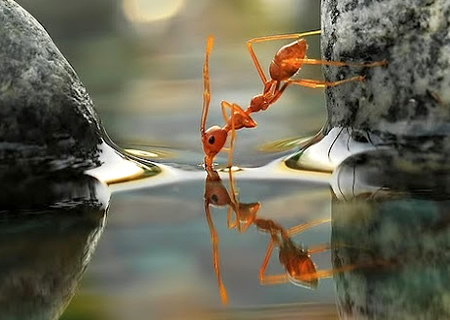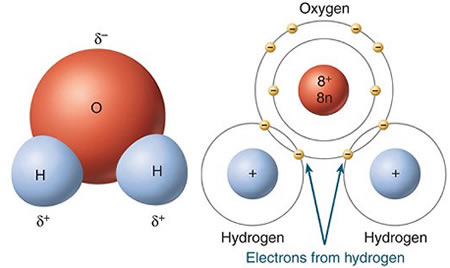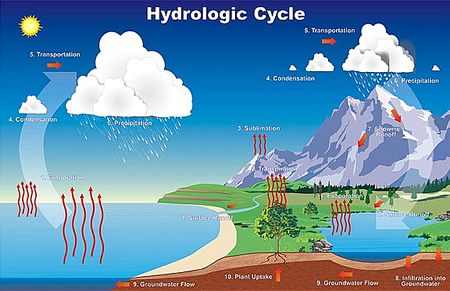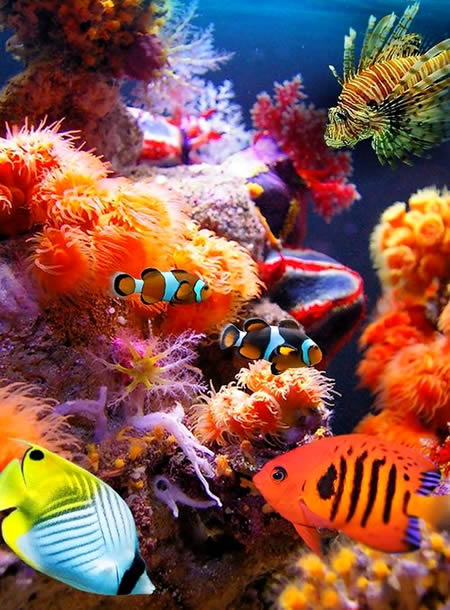 |
| Water and Life |
Water is found in all forms of life on Earth in some form or another. The human body is about 70% water, and other organisms, such as jellyfish, contain as much as 95% water. All of the oxygen that animals breathe had its origin as water. During photosynthesis (the process of using light to create food energy), plants break water apart to produce oxygen and food.
Water is one of the most abundant molecules on Earth. There are approximately 350 million cubic miles (1.4 billion cubic kilometers) of water on the planet. Nearly 97% of all water is found in the oceans, which cover two-thirds of the surface area of the planet.
About 90% of all fresh water is frozen in the ice in the North and South Poles and glaciers (large slow-moving masses of ice). Less than 1% of all the water on Earth is available for consumption, and most of it is found in aquifers (porous rock chambers holding fresh water) underground.





